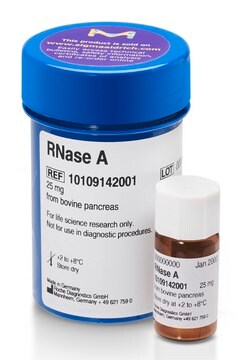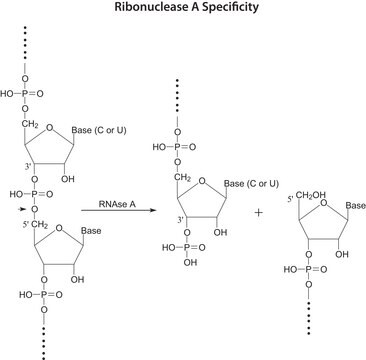537059
Propidium Iodide
Membrane impermeable DNA intercalator.
Synonyme(s) :
Propidium Iodide
About This Item
Produits recommandés
Niveau de qualité
Forme
solid
Fabricant/nom de marque
Calbiochem®
Conditions de stockage
OK to freeze
protect from light
Couleur
dark red
Entrée
sample type intact cells
Fluorescence
λex ~536 nm
λem ~617 nm
Conditions d'expédition
ambient
Température de stockage
2-8°C
InChI
1S/C27H33N4.2HI/c1-4-31(3,5-2)17-9-16-30-26-19-22(29)13-15-24(26)23-14-12-21(28)18-25(23)27(30)20-10-7-6-8-11-20;;/h6-8,10-15,18-19,29H,4-5,9,16-17,28H2,1-3H3;2*1H/q+1;;/p-1
Clé InChI
XJMOSONTPMZWPB-UHFFFAOYSA-M
Description générale
Actions biochimiques/physiologiques
Membrane impermeable DNA intercalator
Avertissement
Notes préparatoires
Reconstitution
Autres remarques
Crompton, T., et al. 1992. Biochem. Biophys. Res. Commun. 183, 532.
Darzynkiewicz, Z., et al. 1992. Cytometry13, 795.
de Caestecker, M.P., et al. 1992. J. Immunol. Methods154, 11.
Pollice, A.A., et al. 1992. Cytometry13, 432.
Informations légales
Mention d'avertissement
Warning
Mentions de danger
Conseils de prudence
Classification des risques
Muta. 2
Code de la classe de stockage
11 - Combustible Solids
Classe de danger pour l'eau (WGK)
WGK 3
Point d'éclair (°F)
Not applicable
Point d'éclair (°C)
Not applicable
Certificats d'analyse (COA)
Recherchez un Certificats d'analyse (COA) en saisissant le numéro de lot du produit. Les numéros de lot figurent sur l'étiquette du produit après les mots "Lot" ou "Batch".
Déjà en possession de ce produit ?
Retrouvez la documentation relative aux produits que vous avez récemment achetés dans la Bibliothèque de documents.
Les clients ont également consulté
Notre équipe de scientifiques dispose d'une expérience dans tous les secteurs de la recherche, notamment en sciences de la vie, science des matériaux, synthèse chimique, chromatographie, analyse et dans de nombreux autres domaines..
Contacter notre Service technique









